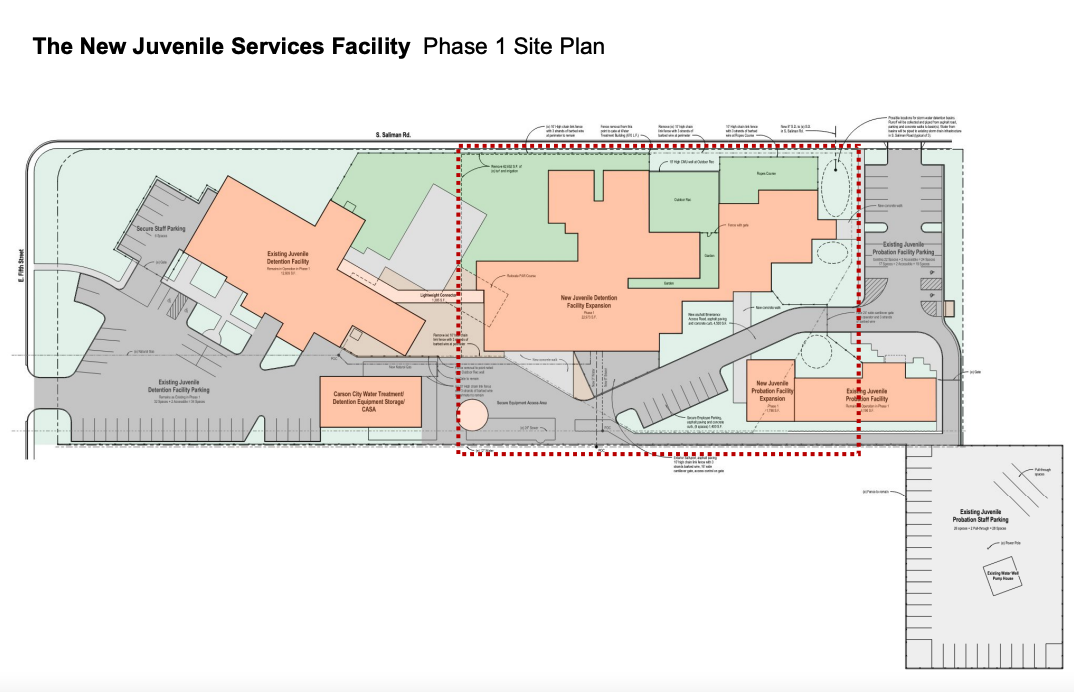The 2021 Facility Needs Assessment found that the Juvenile Detention Center’s dayrooms need to be larger and better organized. Currently, the rooms host everything from reading material and TVs to workout equipment and ping pong tables.
Faith Evans/Nevada Appeal
 If the city does eventually find the funding for a new Juvenile Detention Center, staff recommends building it on the open space next to the existing detention center (outlined in red).
If the city does eventually find the funding for a new Juvenile Detention Center, staff recommends building it on the open space next to the existing detention center (outlined in red).
Comments
Use the comment form below to begin a discussion about this content.
Sign in to comment